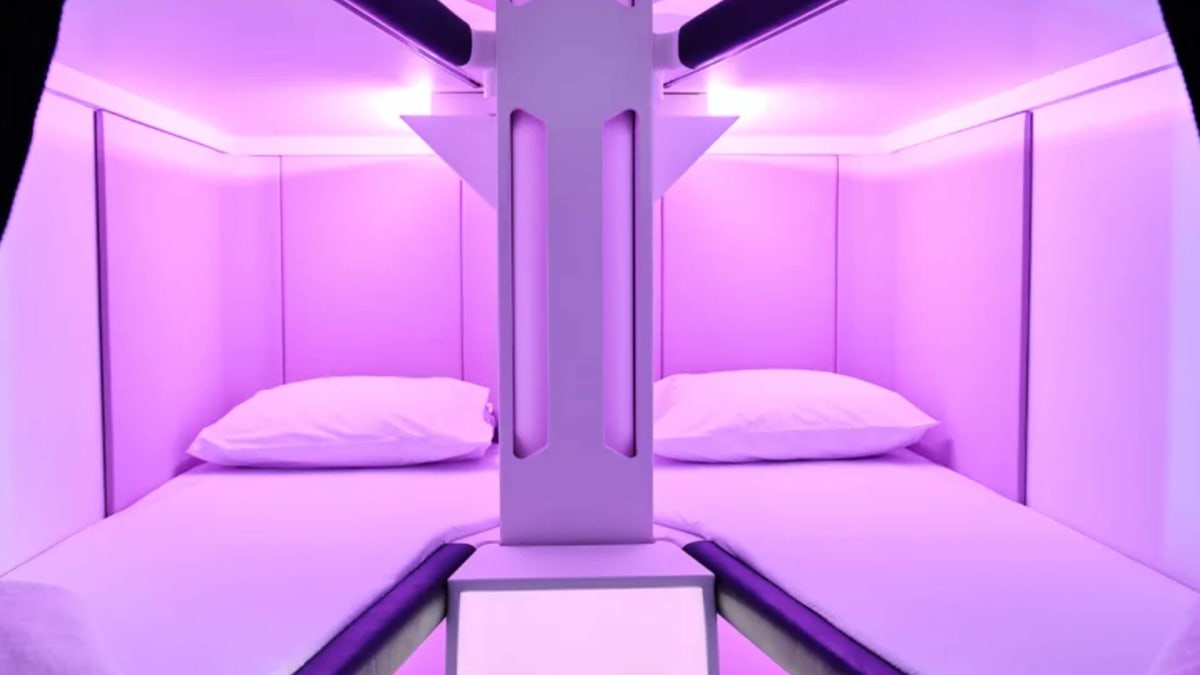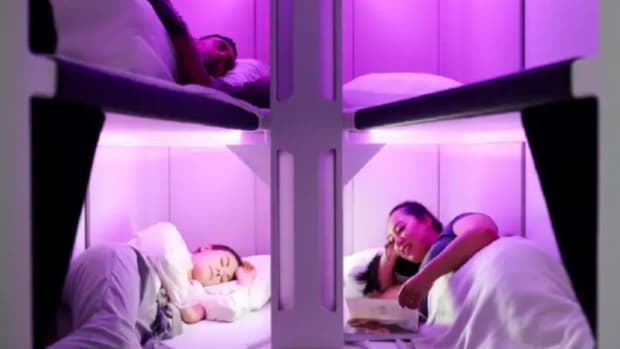
Being able to sleep in a closer resemblance to a real bed is perhaps the most important differentiator between economy and flights of higher classes.
While the latter also comes with more attentive service and better food choices, the lie-back seats are what push some travelers to drop thousands of extra dollars to feel refreshed at the end of a transatlantic flight.
DON'T MISS: Airlines See a New Kind of Traveler at the Front of the Plane
Over the last year, Auckland-based Air New Zealand (ANZFF) has been testing "sleeping pods" that could bring lie-flat seats to economy in a concept the airline calls "Skynest"— six pods measuring 80 inches long and 23 inches wide arranged in a bunk-bed configuration on some of the airline's Boeing 747 (BA) planes.

Air New Zealand
One 'Sleeping Pod' For $100 An Hour, Please
The first flights with such beds will, according to a May 10 press release, start taking off between Auckland and New York and Chicago in September 2024.
"We're delighted that customers are as excited about this new innovation as we are," Air New Zealand Chief Customer and Sales Officer Leanne Geraghty said in a statement. "Our extensive research and design process, which spanned five years and 170,000 hours, has resulted in a product that we're confident will revolutionize the in-flight experience for economy passengers."
The convenience will not come cheap as New Zealand previously announced that it expects to charge between 400 and 600 New Zealand dollars (about $254-$381) for four-hour periods. This adds up to, at the higher end, roughly $100 an hour. Two 15-hour-plus flights have been chosen to pilot the concept as they are long enough for travelers to carve out specific "sleep periods."
Each pod will come with fresh bedding, pillows, a blanket as well as a charging outlet and reading light. After each four-hour period, a cleaning crew will refresh the pod for the next passenger.
Comfort And Sleep During Long-Haul Travel
"North America is the perfect market for Skynest, as it has a premium segment that values comfort and sleep during long-haul travel," Geraghty said.
The Skynest concept quickly attracted a lot of attention online as many wondered what it would be like to try them and liked the idea of being able to book out a specific period for some more comfortable sleep without paying for the full price of a business class ticket.
While some questioned what it would be like on the top bunk in the case of air turbulence, Air New Zealand insists that it has run extensive tests and that the sleeping pods are completely safe. At the moment, the Skynest pods are designed only for individual travelers and are not meant for those who'd like to stay in it with a partner or child.
Although airlines will usually only have one or two such pods out of sight from travelers, the concept is already commonly used for flight crews to get some rest on long-haul flights. Air New Zealand is, as the airline has said in numerous press releases, hoping to lead the way for bringing the idea of sleeping pods to the average traveler. Similarly to paying for internet or alcohol on board, it can become a source of extra profit from customers looking to "elevate" their experience.
While the $100-per-hour , the airline said that it is still "working through the exact details" of the booking process and pricing.







